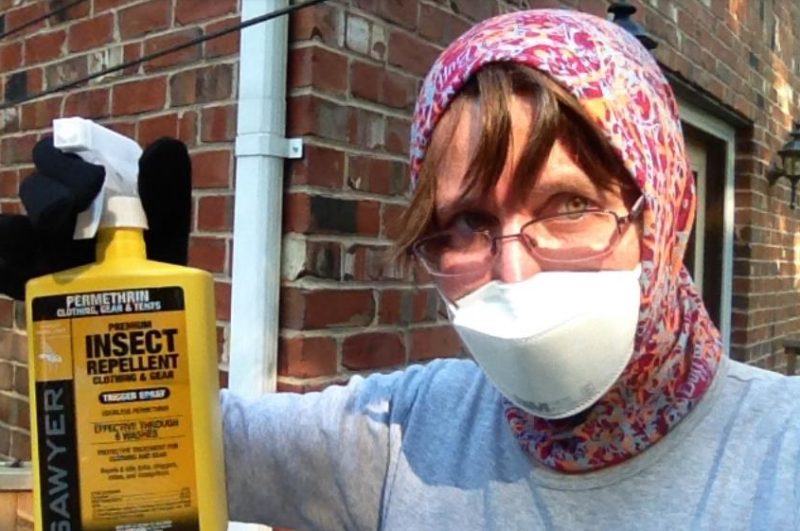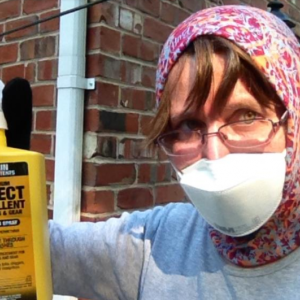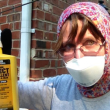Tick Talk: Dr. Nananda Col tells how to avoid Lyme
Georgetown resident and physician Dr. Nananda Col spoke to a Kennebec Estuary Land Trust (KELT) session of over 50 people April 1 on ticks and tick-borne diseases. Col became a member of a group in Georgetown dedicated to controlling tick populations after she caught two diseases while mushroom foraging. She has been giving lectures and seminars on the subject ever since.
Even during the COVID-19 pandemic, Lyme disease and everything tick-related has made headlines, said Col. Lyme disease has become much more prevalent in Maine over the past 20-plus years and Midcoast Maine, particularly Sagadahoc and Lincoln counties, are the most affected, she said.
“And the best place to find ticks is actually in your backyard. Maine's tick lab studies all the ticks people have pulled off themselves and sent in and most are found while gardening, doing yardwork or (playing) in the yard, trapping, logging, camping, bicycling. If you're out and about and you're in the woods and not taking precautions, you're probably going to get it.”
The prevalence of tick-borne diseases is so great because Maine has so many deer and about half of all deer ticks in Maine are carrying the diseases, said Col. Eight percent of deer ticks carry another disease called anaplasmosis and 6% carry babesiosis.
The ecology of deer ticks holds an interesting hierarchy, Col said. Adult deer ticks will also feed off opossums, raccoons, coyotes and skunks. An opossum eats about 5,000 ticks per week and foxes eat mice which, along with other small mammals, carry and spread tick-borne diseases. However, coyotes prey on foxes, deer support around 500,000 new ticks every year, and aside from deer, ticks cannot be supported by other mammals for their life-cycles’ three blood meals, said Col. Over 90% of mature deer ticks feed on deer and female ticks will drop 3,000 eggs at one time. “Deer don’t carry the disease, but are critical in sustaining the life cycle of diseased ticks.”
Ticks are an arachnid and, contrary to popular belief, they do not hop, but attach to clothing, crawl upwards and most commonly establish residence in the moist places on the body. The bullseye rash is the most commonly reported symptom and appears between three and 30 days after the bite. The rash grows in size for several days and is not painful, itchy or warm, which increases the unlikeliness the tick or bite site is ever discovered. Col said the age groups at greatest risk are 5 to 14 and 65 and older.
Col said if you find a bullseye-type rash, one way to determine if it was caused by a tick bite is to track any growth by marking the outer edge of the rash with a permanent marker and to check every few hours to see if the rash has grown out beyond the marking. “That makes it highly suspicious for it being Lyme disease … There's not much else that does that.”
Though there are no approved vaccines for Lyme disease and there is not any one, right way to avoid ticks, there are several precautions one can take, said Col. Methods of lowering tick presence include limiting certain shrub species like Japanese barberry, keeping grass low with a barrier between lawn and woods, increasing sun exposure and reducing dampness. Certain pesticides are known to work on ticks, but also affect other wildlife. Along with encouraging and fostering the ecology working against ticks and their diseases, Col recommended a spray mixture of water and rosemary essential oils as a deterrent around the yard and the house. She also recommended the use of clothes pre-treated with permethrin and DEET on exposed skin.
The big rules for keeping safe from ticks include hiking and playing smart, dressing appropriately, using repellents effectively, checking for ticks after outside activities, removing ticks correctly and keeping the house and yard protected. Proper attire includes light-colored pants and socks, and the shirt tucked into the pants, which should be tucked into the socks, said Col. Depending on humidity, ticks can survive for days in the home, said Col. “If you want to kill the ticks on your clothes, throw them in a dryer before you wash them so you can kill anything that's on your clothes … Ticks can survive in a warm or hot wash.”
Tick checks should take just under a minute and start in the moist areas of the body, wandering through folds, crevices and the scalp and hairline. Removal should avoid long held myths like burning a tick out of the skin or popping the tick; proper removal calls for tweezers and lifting the tick straight up and gently with steady pressure. Remainders of the tick should be left alone and the skin should be disinfected thoroughly and immediately. The bite site should be checked often for the next month for any rashes, though slight redness can be expected, said Col.
“We don't feel their bite because they actually inject a little anesthetic when they bite and there's no itch when they bite because of what they inject. They know where to hide so we can't see them and they don't come off easily, so we are definitely disadvantaged.”
Col said if tick bites go untreated and Lyme disease develops, there is a 60% chance of developing persistent arthritis, 10% chance of neurological issues such as facial palsy and 5% chance of cardiac issues such as atrioventricular blockage.
“If you catch it within 72 hours of removing the tick, you've got a good chance that by taking one doxycycline pill, you will actually prevent yourself from getting Lyme disease. Finding it early, removing it ASAP, letting your doctor know and getting that one pill is so much better than getting a full course of antibiotics … and strongly reduces your risk of getting Lyme disease.”
Event Date
Address
United States




























